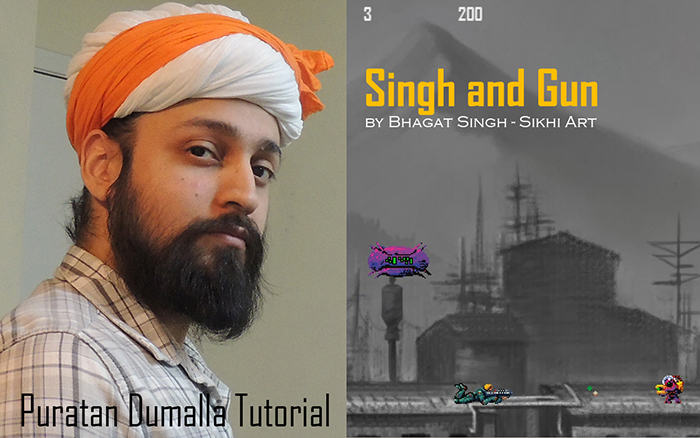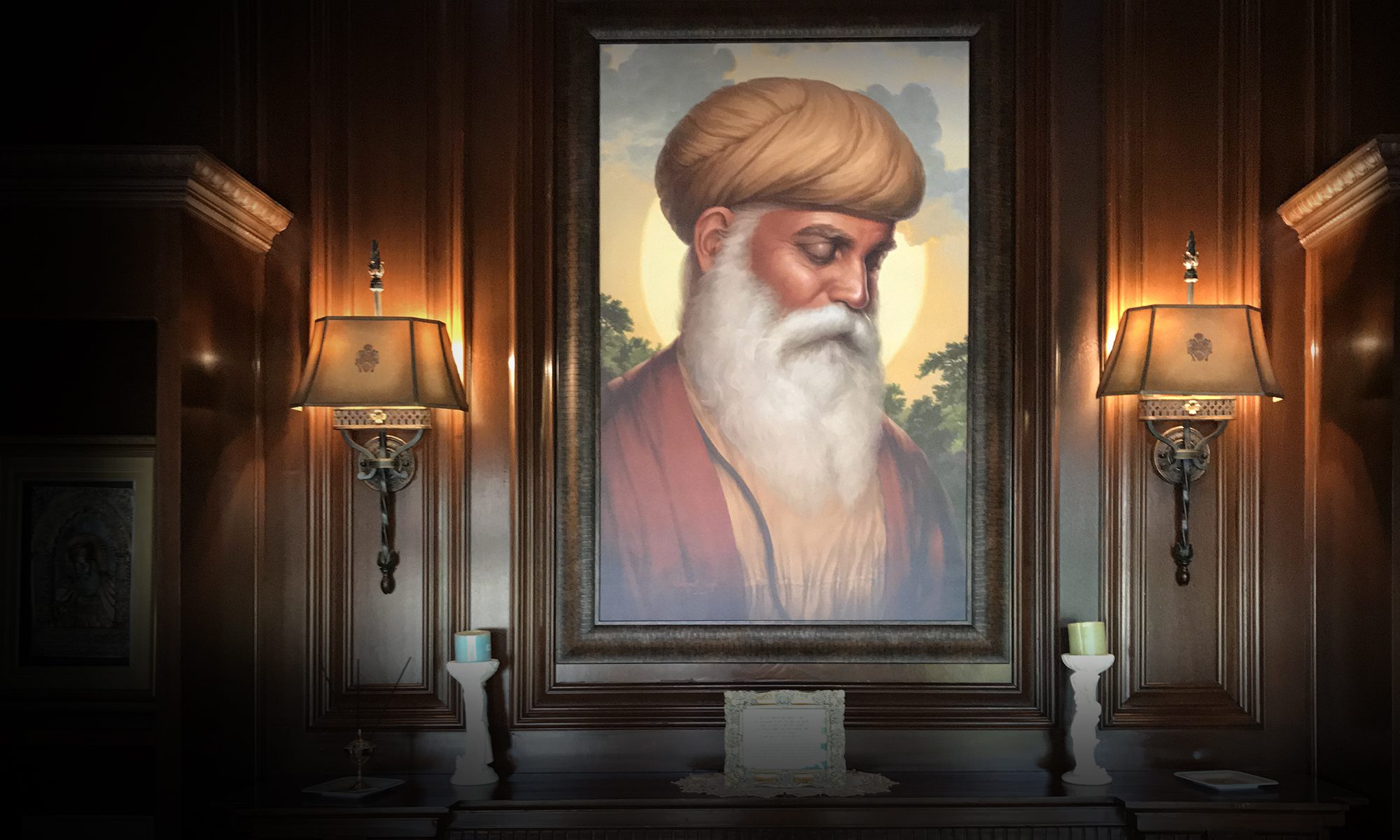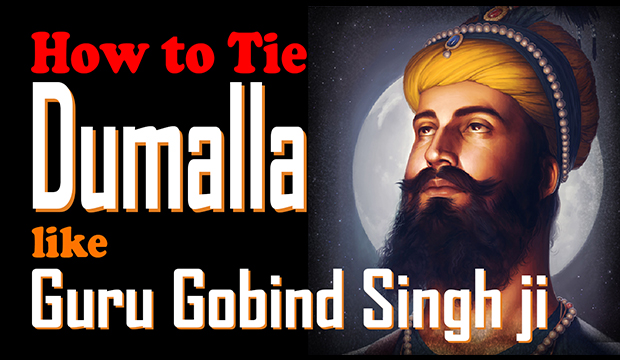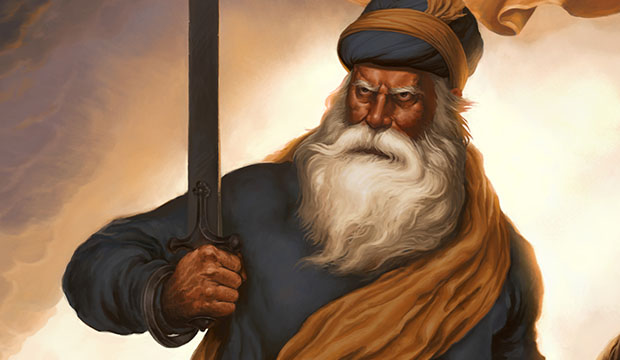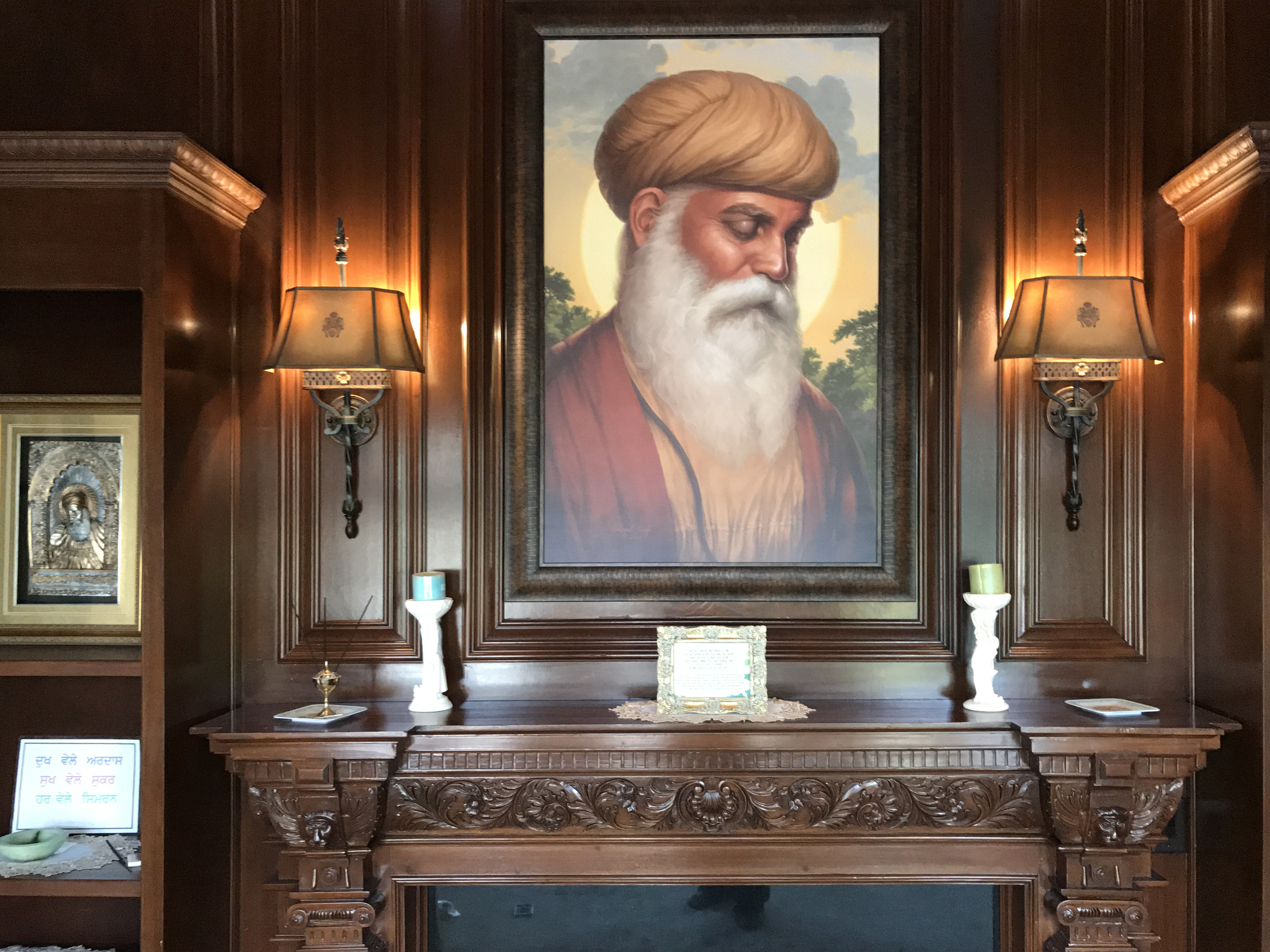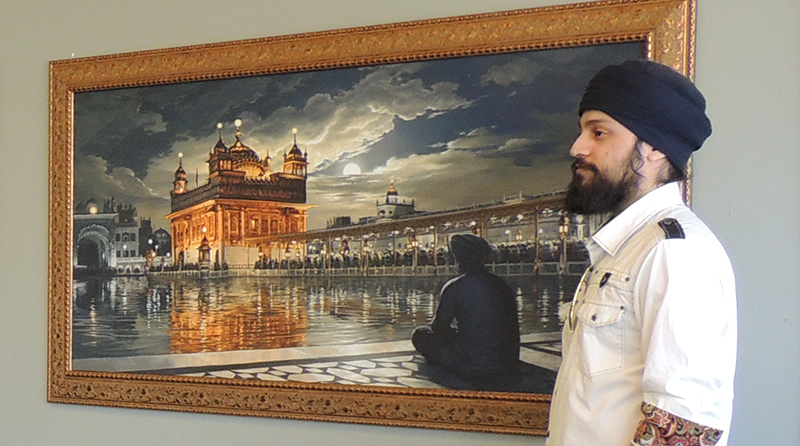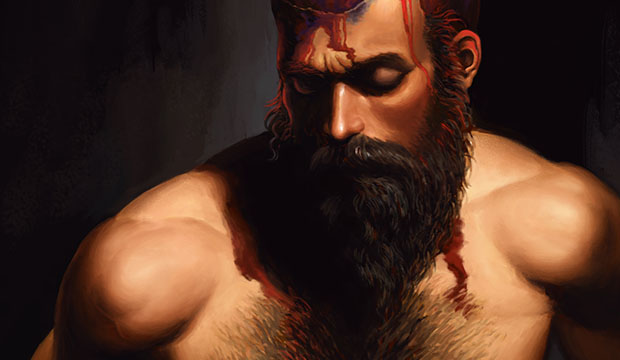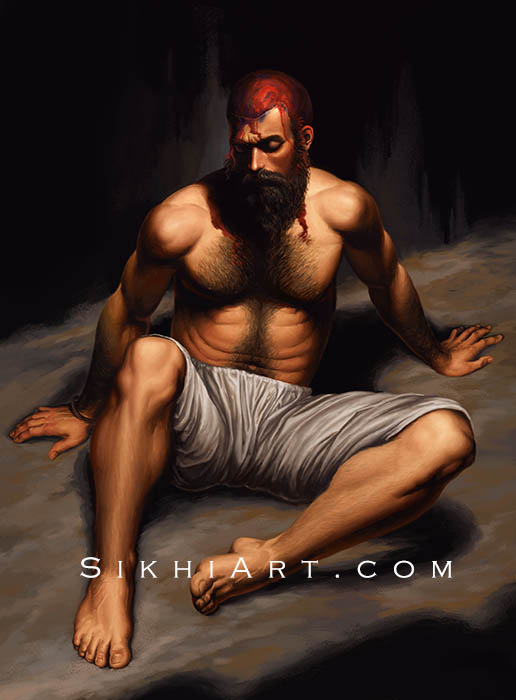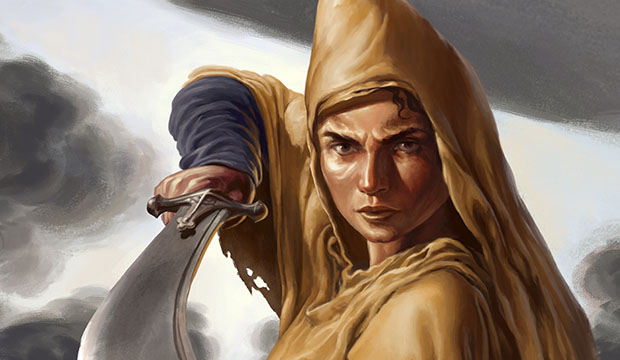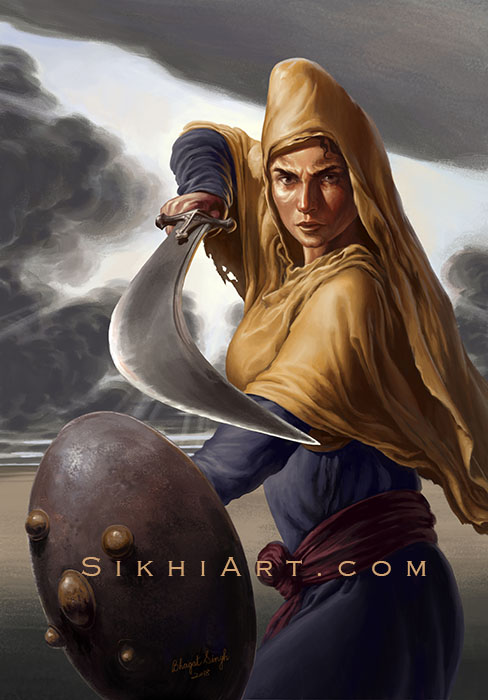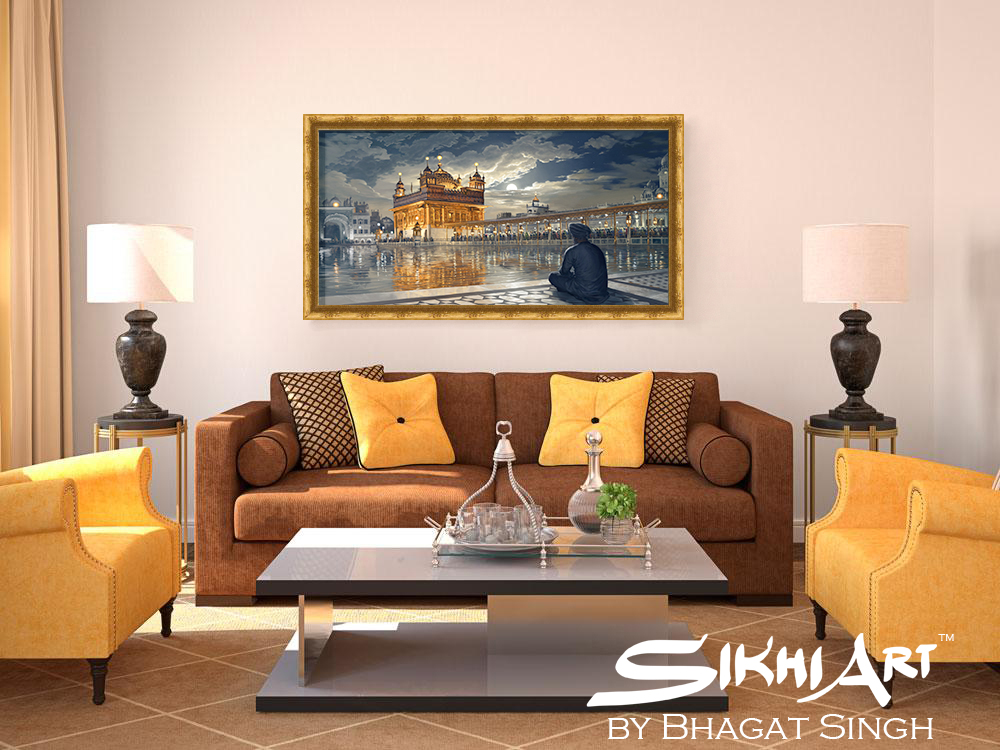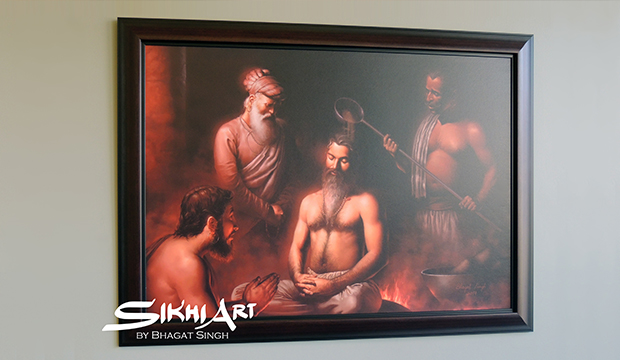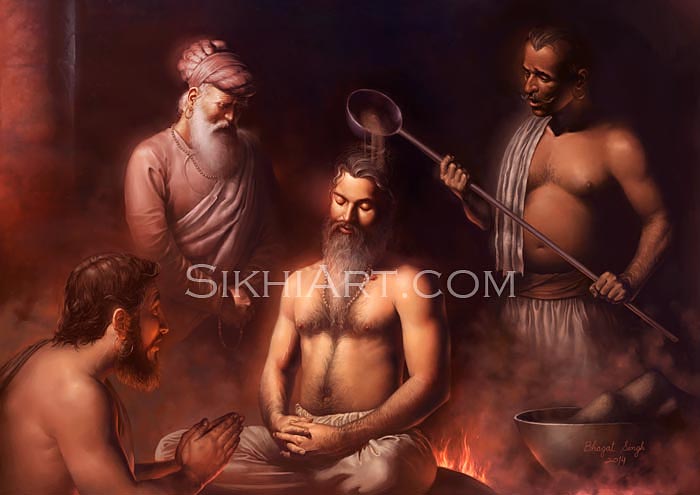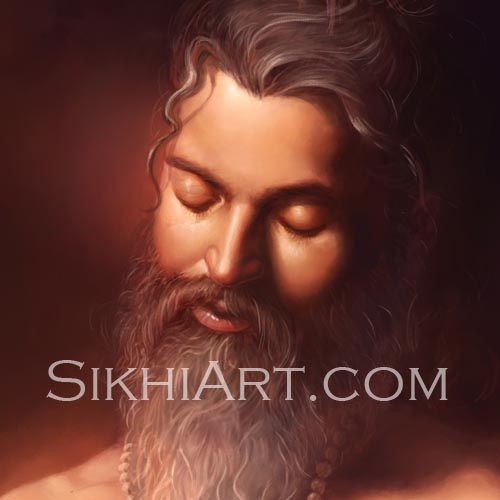In the puratan Sikh Art Tradition of punjab, we see Guru Hargobind Sahib ji and Guru Gobind Singh ji with a peculiar turban, called Puratan Dumalla. In this video, we will learn about the Puratan Dumalla and we will also learn how to Tie this type of Turban.
The Turban of Kings – How to Tie Dumalla like Guru Gobind Singh ji, Emperor Akbar & Shivaji Maratha
I call it the Puratan Dumalla, to avoid confusion with the modern Nihang Dumalla. It’s a different style of turban.
This is the type of turban India’s greatest kings wore.
Sikh Gurus, Guru Hari Gobind ji to Guru Gobind Singh ji wore this turban.
Emperor Akbar wore this turban.
Shivaji Maratha wore this turban.
Rajput Kings and Kings from different parts of India wore this turban.
It is the turban of Kings.
It was particularly famous in Medieval India from 1400s to 1700s.
This style of turban started dying during the 1800s.
In Rajasthan it transformed into different turban styles.
In Sikh Kingdom it transformed into different turban styles.
In Mughal Empire… well Mughal Empire died out in 1800s.
It died by 1900s during the British Raj. It’s no longer seen today.
No one wears it. No one knows about it. And no one knows how to tie it.
Hindi movies and serials are filled with Mughals and Rajputs wearing cartoony cap-like pseudo dumallas, with their cut hair sticking out the back.
Whereas Punjabi movies and serials don’t have any idea that the Sikhs even wore such a turban in the first place.
So I’m trying to revive his traditional style of dumalla so that our ancestral knowledge is preserved for future generations.
I have been learning how to tie this turban for the past 5 years, and I believe I have finally cracked the code.
I have figured out how to tie it and I will share this knowledge with you guys today.
When I said this turban is no longer seen today, I meant this exact style is no longer seen but many turban styles that we today resemble this old turban.
You may notice hints of Patiala Shahi turban, modern Rajasthani turban, Bhangra turban, and of course the modern Nihang Dumalla.
So to tie this turban, you will need –
1 Turban size 6m x 0.5m.
2nd Turban size 2m x 0.5m.
Keep the first couple wraps nice and loose.
Dumalla refers to that bit that is flaring out of the top. It is also called farla, turla, sirra, it has multiple names. Today we call the Nihang Turban a dumalla, but in old times, it was this fan bit that was called Dumalla.
(Bhai Kahn Singh ji Nabha, Mahan Kosh)
FAQs
Q1. Did Guru Gobind Singh ji actually tie this type of turban?
Yes. This is the type of turban that we see in his portraits from 1600s-1800s.
Q2. Didn’t Guru ji tie the tall, conical Nihang Dastaar?
Nope. If he did, then his portraits would’ve shown that style of turban.
The tall, conical Nihang Dastaar did not exist prior to 1800s. It emerged in Sikh art during mid 1800s.
Even early 1800s art, shows Sikh warriors tying a different turban.
Q3. Did Guru Gobind Singh ji put chakra on his turban?
No. Showing Guru Gobind Singh ji with chakras on his turban is a modern trend started by Sobha Singh. We don’t see it in his portraits before Sobha Singh’s paintings.
The trend of wearing chakras on turban started in 1800s with Nihangs. Though keeping weapons inside a Turban is a much older trend.
In old times, they probably hid a dagger in it, slid it in and out from the back.
Q4. Did Shivaji Maratha tie a turban like this? Didn’t he tie a different conical one?
Yes he tied this one. The conical, coiled one is a modern depiction only. He wore a Puratan Dumalla.
Fine Art Prints for Sale
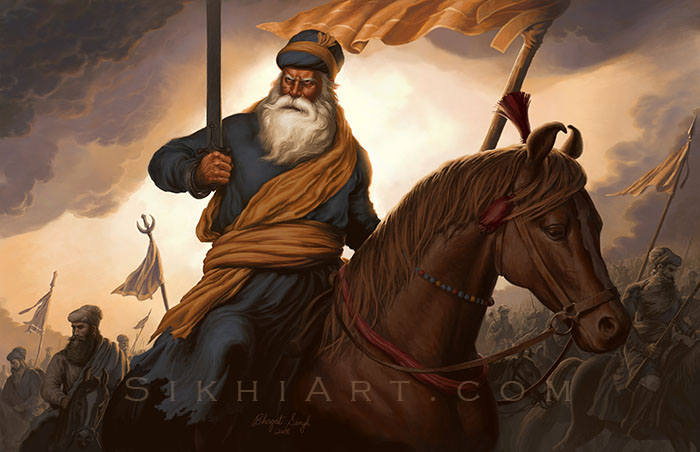
Support Projects, Get Rewards
